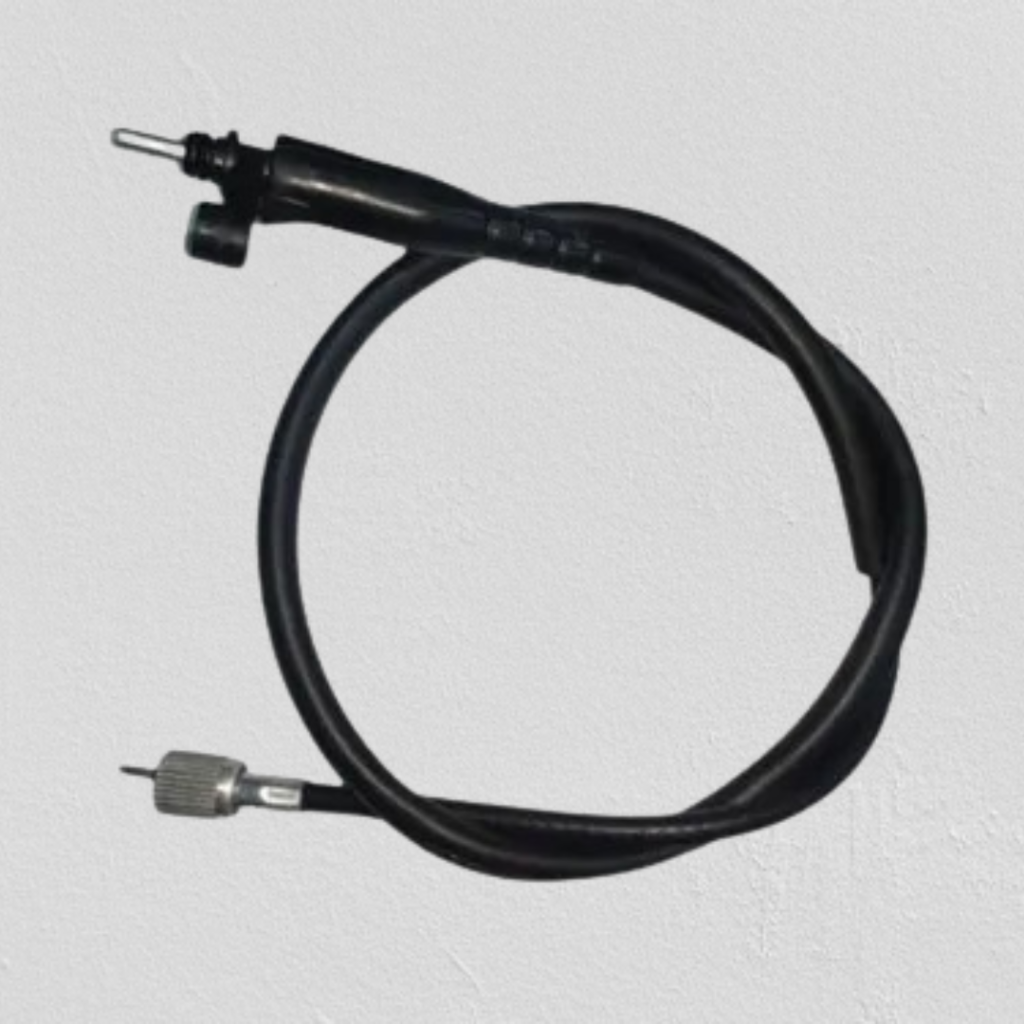Speedometer cables are crucial components in vehicles. They ensure accurate speed readings by translating the rotational speed of the vehicle’s wheels into a readable speedometer reading on the dashboard. Consequently, this article explores the function, construction, types, applications, maintenance, and common issues related to speedometer cables, providing a comprehensive understanding of this essential automotive component.

What is a Speedometer Cable?
Essentially, a speedometer cable transfers rotational movement from the vehicle’s transmission to the speedometer on the dashboard. In other words, it converts the vehicle’s wheel speed into an electrical or mechanical signal displayed on the speedometer.
The Role of Speedometer Cables
- Speed Measurement: To begin with, the cable’s primary function is to provide an accurate reading of the vehicle’s speed. The cable transfers rotational motion from the transmission to the speedometer. Thus, it ensures the driver receives real-time speed information.
- Driver Safety: Furthermore, accurate readings are crucial for safe driving. For instance, a malfunctioning cable can result in incorrect speed information. As a result, this issue affects the driver’s ability to operate the vehicle safely and adhere to speed limits.
- Vehicle Performance: Additionally, some vehicles use these cables for other functions. For example, they may control cruise control systems or provide input for anti-lock braking systems (ABS).
Construction of Speedometer Cables
Several components make up a speedometer cable:
- Cable Core: First, a flexible steel or metal shaft transmits operational torque and stresses. This core must be durable enough to withstand everyday use.
- Cable Sheath: The sheath encases the core and is made from materials like plastic, rubber, or metal. Consequently, this design protects the core and reduces friction, ensuring smooth operation.
- End Fittings: Moreover, end fittings connect to the transmission and speedometer, ensuring a secure connection.
- Drive Gear: Occasionally, a drive gear attaches to the end connecting to the transmission. This gear converts rotational movement into a suitable form for the cable.
Types of Speedometer Cables
- Mechanical Cables: Traditionally, these cables are used in older vehicles, relying on a mechanical connection between the transmission and speedometer.
- Electronic Cables: In contrast, modern vehicles often use electronic speedometers. These systems integrate sensors and electronic components. Nevertheless, similar assemblies might still be utilized in certain cases.
- Flexible Cables: Designed to be more adaptable, these cables work well in tight spaces or applications requiring high flexibility.
Applications of Speedometer Cables
- Automobiles: Speedometer cables are widely used in cars, trucks, and motorcycles to provide speed readings. Consequently, they are essential for accurate measurement and vehicle operation.
- Classic Cars: Many classic and vintage vehicles rely on mechanical cables. These cables are crucial for maintaining the authenticity and functionality of older vehicles.
- Agricultural Machinery: Tractors and combine harvesters use speedometer cables to provide speed information necessary for operation and calibration.
- Marine Applications: Additionally, boats and watercraft use these cables to measure speed and provide navigational data.
Maintenance and Troubleshooting
- Regular Inspection: Regularly inspect the cable for signs of wear, fraying, or damage. Ensure that connections at both ends are secure.
- Lubrication: Apply lubricant to reduce friction and ensure smooth operation. Use a lubricant specifically designed for automotive cables.
- Adjustment: If the speedometer reading is inaccurate or fluctuates, adjust the cable according to the vehicle’s manual.
- Replacement: Replace a damaged or worn cable with a new one that matches the vehicle’s specifications.
Common Issues with Speedometer Cables
- Inaccurate Readings: If the cable is worn or damaged, it may lead to inaccurate readings. This problem can arise from slippage, wear, or improper connection.
- Cable Binding: Lack of lubrication or debris might cause the cable to bind, leading to erratic readings.
- Fraying or Breaking: The cable core may fray or break, especially if it is old or has experienced excessive wear. Consequently, this issue results in a non-functioning speedometer.
- Loose Connections: Ensure that all connections are secure to avoid inaccurate measurements.
Innovations in Speedometer Cable Technology
- Improved Materials: Advances in materials science have led to more durable and flexible cables. Manufacturers now use advanced coatings and materials to enhance performance.
- Enhanced Design: Innovations include advanced winding techniques and improved construction methods. As a result, these improvements contribute to better accuracy and smoother operation.
- Integration with Electronic Systems: Modern vehicles may integrate speedometer cables with electronic control systems. Consequently, this integration provides more precise measurements and reliability.
- Custom Solutions: Manufacturers offer custom cables tailored to specific applications. Therefore, users enjoy greater flexibility and performance in specialized settings.
Conclusion
In conclusion, speedometer cables are essential for accurate speed readings and reliable vehicle operation. From traditional mechanical systems to modern electronic applications, these components significantly impact performance and safety. Regular maintenance and timely replacement are crucial for optimal function. As technology evolves, innovations in materials, design, and integration continue to enhance the durability and functionality of these cables. By understanding and maintaining your speedometer cable, you ensure accurate measurements and a better driving experience.
